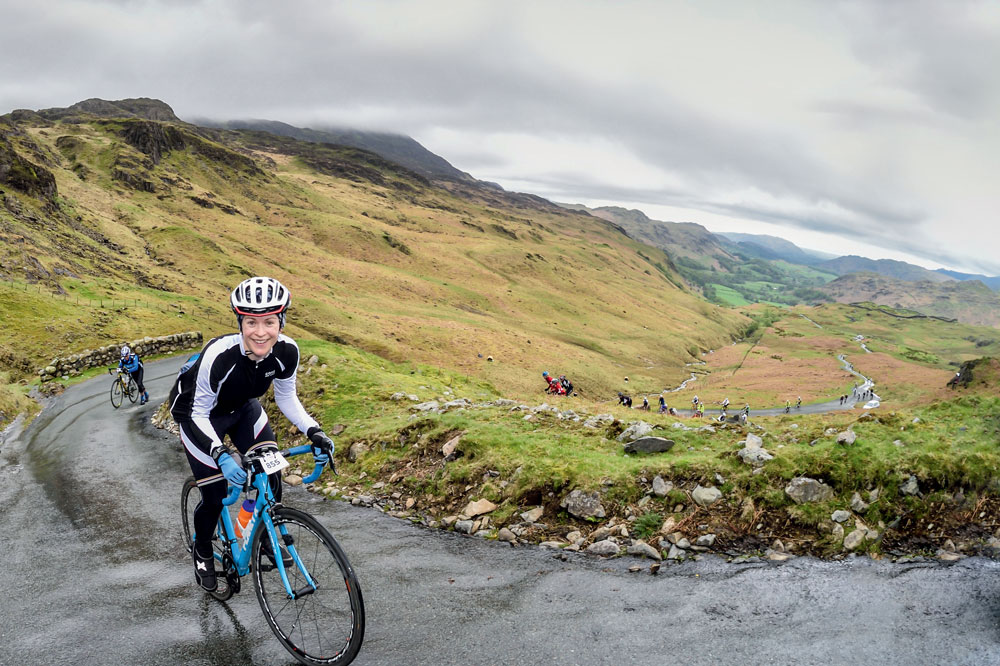Fred Whitton Challenge 2014
Simon Warren doesn't even know why he keeps on tackling the Fed Whitton Challenge, but after his fourth attempt, he's hoping for a dry run next time.

Web: www.fredwhittonchallenge.co.uk
Distance: 112miles
Major climbs: 10
Terrain: Vicious
Number of finishers: 1,750
Average time: 8hr 45 min
Best: The climb of Newlands Pass.
The latest race content, interviews, features, reviews and expert buying guides, direct to your inbox!
Worst: The climb of Hardknott Pass.
God knows why I keep coming back; maybe I think it will get easier, or maybe, just maybe one year it might not bloody rain. This was my fourth crack at the Fred Whitton, which is without doubt the toughest, baddest sportive in Britain — and the standard by which all others have to be measured.
There’s no easy route, no soft option — it’s 112 miles or nothing. This is a true challenge, not some jolly in nice country lanes.
This year saw a tweak to the route as the HQ was moved from Coniston to Grassmere, allowing a decent warm-up before the first climb instead of the usual 500m. Of course it was raining, but not consistently, just heavy showers, which, combined with a high of 11°C, meant jacket and leg-warmers all day.
Once on the road, I soon warmed up and found my legs and was comfortably gapping my group up the climbs. However, it would have been foolish to continue alone, so I held back, knowing that I’d make swifter progress as part of a bunch.
The first proper challenge of the day is Honister Pass, and by some miracle the road was almost dry. I felt pretty good on its vicious 25 per cent slopes even on my 39/26 chainset (I probably should have fitted a compact for this ride).
Time to climb
After Honister, through the first feed and it’s straight up Newlands Pass, which is without doubt one of my favourite places on Earth. The view out over that perfect green valley just makes me smile from ear to ear.
Following the long descent, it’s on to the Alpine-esque forested bends of Whinlatter Pass before you start the lumpy journey over towards Cold Fell. What’s usually a pitched battle against driving wind and rain was this year quite pleasant, in the dry and with a favourable wind helping to blow us across its beautifully barren tops.

Down to the second and last feed in Calderdale, it was then on to the mighty and magnificent Hardknott Pass. As you catch sight of it, and with 100 miles in the legs, it’s enough to make you want to just turn round and run away, but you can’t; you have to cross it.
I almost managed to wrench my large gear up, but at the second-to-last hairpin, I threw in the towel, got off, and had to make the walk of shame past the photographers as they happily snapped away.
As the 30 per cent slopes eased to a more civilised 20 per cent, I remounted, but then bang — both hamstrings cramped at once. Aaarrgh! I was now in trouble; as soon as the pain eased, I had to move — standing still would waste time. I hobbled on until the slope became gentle enough for me to put my leg over the bike to gingerly carry on to Wrynose. Thankfully they survived this ascent, leaving the final 10 miles.
With all the major obstacles now behind me, I smashed it. In this event, you must leave everything on the road, squeeze every last drop from the lemon. I crossed the finish line broken, cramping from head to toe and just like the three previous rides here, vowing never to do such a stupid thing again.
Missed it? Try this...
The Slate Stinger (now September 28) also covers some of these truly epic climbs.
Founded in 1891, Cycling Weekly and its team of expert journalists brings cyclists in-depth reviews, extensive coverage of both professional and domestic racing, as well as fitness advice and 'brew a cuppa and put your feet up' features. Cycling Weekly serves its audience across a range of platforms, from good old-fashioned print to online journalism, and video.